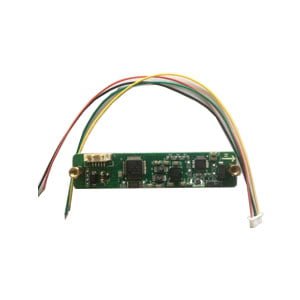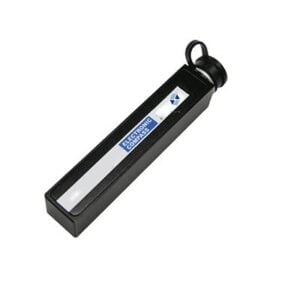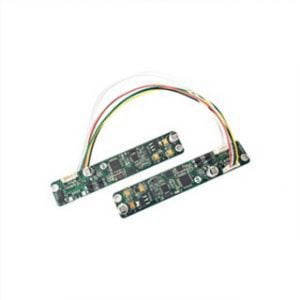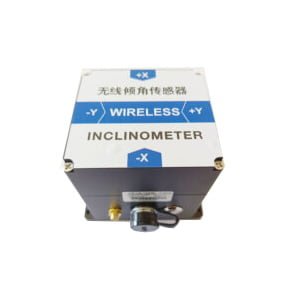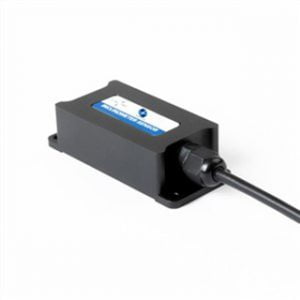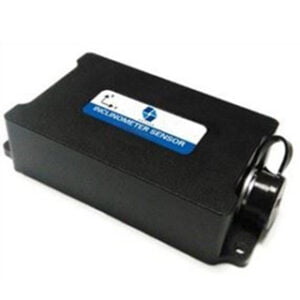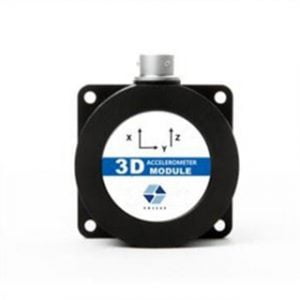Current Type Triaxial Acceleration Sensor
Introductions
ER-AS-98 Current Type Triaxial Acceleration Sensor is a series of accelerometer products with a wide range of applications, which can be used in vibration tests, shock tests and other fields. Output interface: 4~20mA, MK928. It is a capacitive single crystal silicon sensor, which is composed of a microcomputer-processed silicon chip, a low-power ASIC for signal conditioning, a microprocessor with a memory compensation value, and a temperature sensor.
It is characterized by small size, low power consumption, calibrated, fixed structure, and stable output. The new electronic configuration provides solid-state reset power, comprehensive over-power protection, long-term stability and less than the typical value of the following scale factor deviation of 0.1% of the full scale. This series of products have the characteristics of fixed structure, low power consumption, and good deviation stability, ensuring stable output reliability.
Features
Three axes (X, Y, Z) are optional
Accuracy: 0.01g, resolution: 0.001g
Impact resistance: 2000g
Wide voltage input DC: 9~36V
Wide temperature working: -40~+85℃
Industrial grade design
Excellent deviation stability, anti-vibration
Protection level IP67
Low volume (90*40*27 mm)
Output 4~20mA (optional)
Range ±1g/±2g/±4g/±8g/±16g/±32g/±40g optional
Applications
Crash recording, fatigue monitoring and prediction
Satellite solar antenna positioning
Tractor, deep tillage machinery
Mining machinery, oil logging equipment
Medical equipment
Cloud roadbed analysis
Fault detection of high-speed railway
Tilt based monitoring
Various construction machinery angle control
Inspection of bridges and dams
Specifications
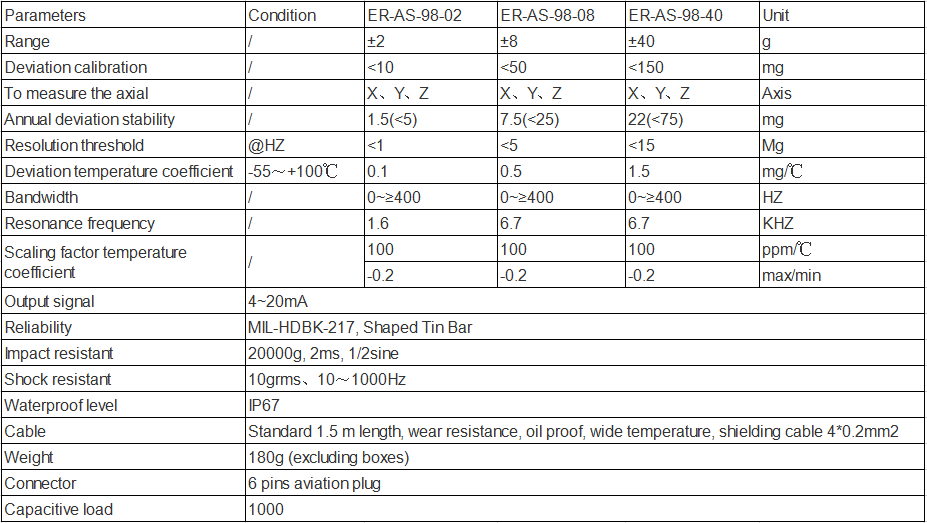
Electrical parameters
| Parameter | Condition | Min | Typical value | Max | Unit |
| Power supply voltage | / | 9 | 12 | 36 | V |
| Working current | / | / | 40 | / | mA |
| Output load | resistivity | 10 | / | / | kΩ |
| Capacitive character | / | / | 20 | nF | / |
| Working temperature | / | -40 | / | 85 | ℃ |
| Storage temperature | / | -55 | / | 125 | ℃ |
Application Techniques
1.What is the Difference between a Gyroscope sensor and an Acceleration Sensor?
2.How does an acceleration sensor determine vehicle behavior?
3.Principle of Acceleration Sensor
4.What Are The Classifications Of Acceleration Sensors?
5.Comparision of Different Acceleration Sensors
6.Acceleration Sensor Correction Angular Velocity Sensor
More Products
